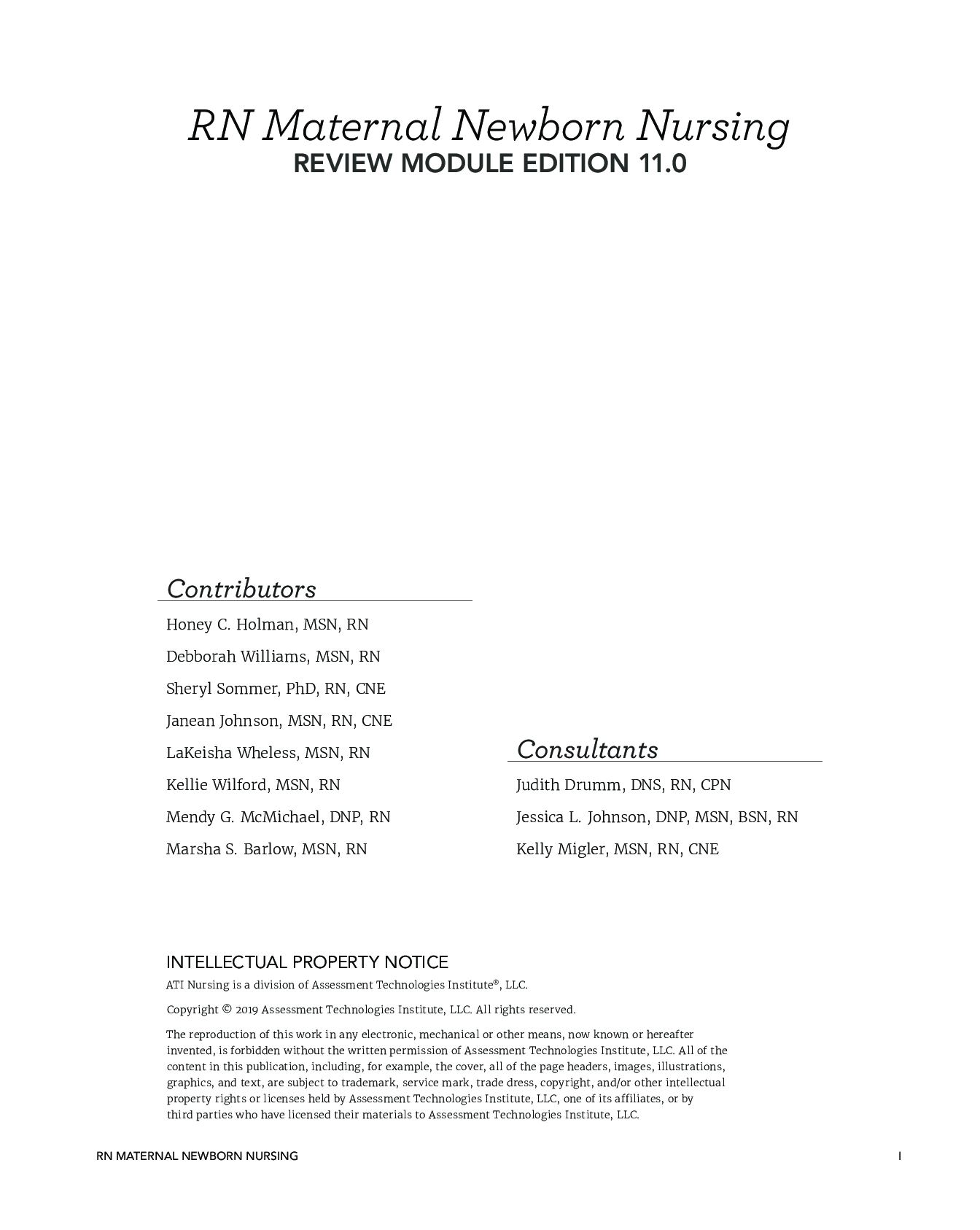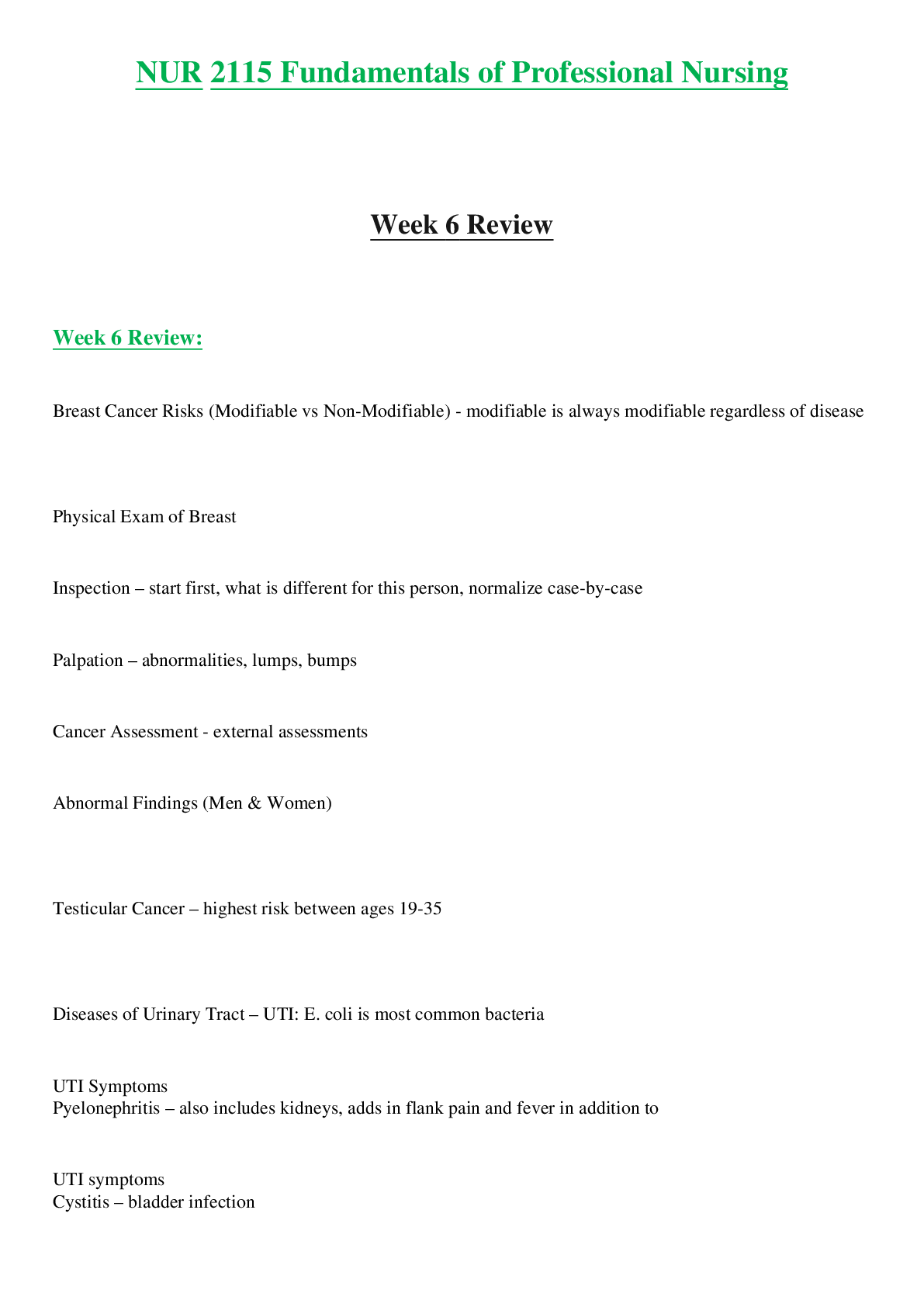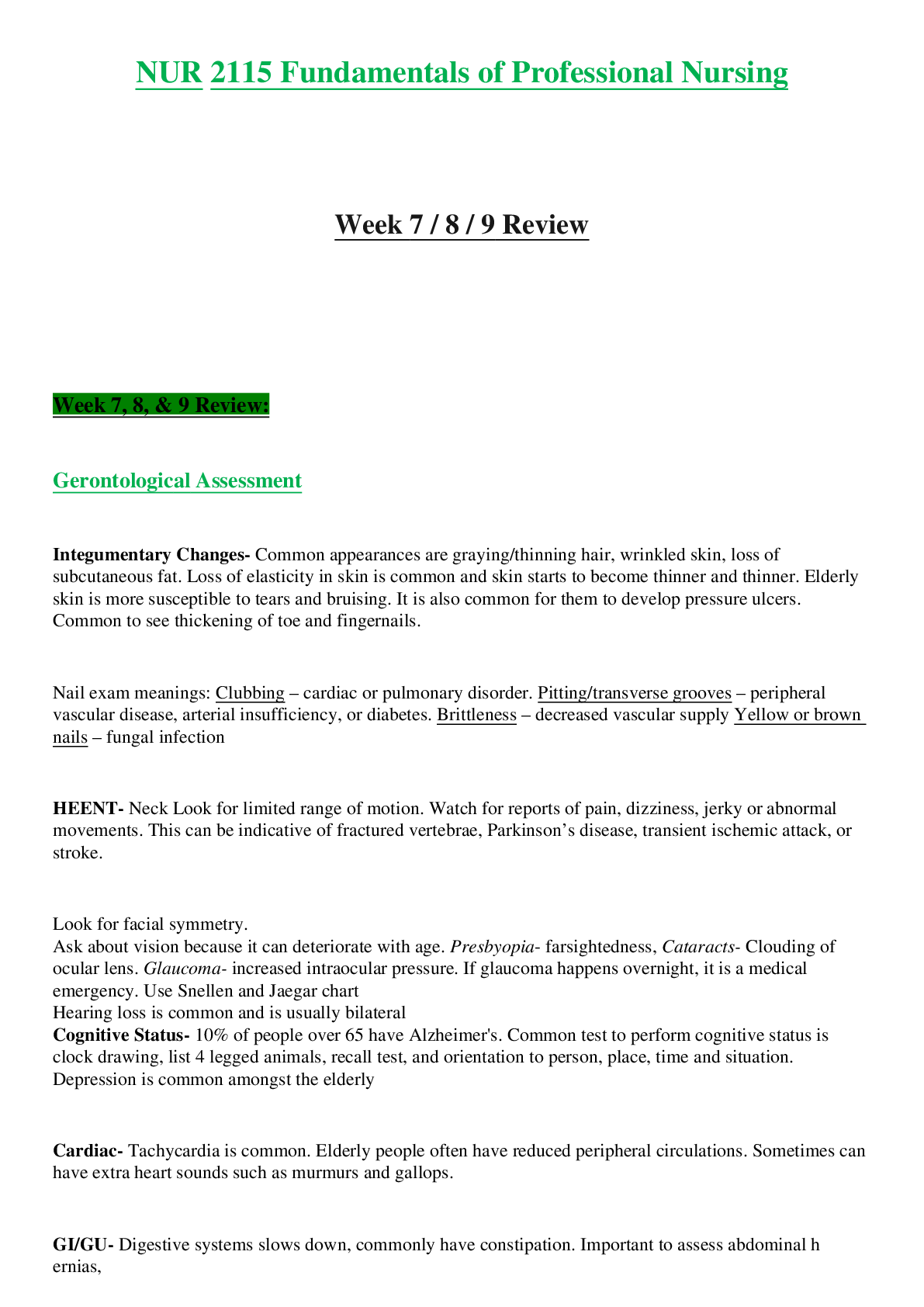*NURSING > STUDY GUIDE > NURS 190 Physical Assessment: Mid-Term Study Guide, Latest 2020 (All)
NURS 190 Physical Assessment: Mid-Term Study Guide, Latest 2020
Document Content and Description Below
NURS 190 Physical Assessment: Mid-Term Study Guide, Latest 2020.1. Palpation (145-146) – skill of assessing the pt through sense of touch (size, shape, location, mobility of a part, position, vibrat ... ions, temperature, texture, moisture, tenderness, and edema) a. *Dominant hand is more sensitive than non-dominant hand b. *Known painful areas are usually last areas to be palpated c. Light Palpation – to assess surface characteristics (skin texture, pulse) or tender, inflamed areas near surface of skin a) Finger pads - to discriminate underlying structures and functions (pulses, superficial lymph nodes, crepitus) 1) At depth of 1 cm, form circles around the skin b) Ulnar surface of hand w/ pinky (or base of fingers) – vibrations/fremitus c) Dorsal surface of hand – to assess temperature d. Moderate Palpation a) Palmar surface of fingers – to determine position, structure, depth, size, shape, consistency, mobility of organs and any pain, tenderness or pulsations 1) At depth of 1-2 cm, rotating the fingers in circular motion e. Deep Palpation – used to palpate an organ that lies deep within body cavity (kidney, liver, spleen) or overlying musculature is thick, tense, or rigid (obesity, abdominal guarding) a) Two hands (dominant on skin, non-dominant on dominant hand), 2-4 cm b) Contraindicated in pts w/ rigidity caused by inflammation or alterations in underlying organs and structures (dissecting aneurysms, peritonitis, ectopic pregnancy) 2. How to Percuss (147-148) a. Used to determine the size and shape of organs and masses and whether underlying tissue is solid or filled w/ fluid or air b. Types: a) Direct – tapping w/ body w/ fingertips of dominant hand 1) to examine thorax of infant or assess sinuses of an adult b) Blunt – placing the palm of nondominant hand flat against body and striking with the nondominant hand w/ dominant hand 1) To assess pain and tenderness in gallbladder, liver, kidneys c) Indirect (most common, sounds are clearer) – hyperextended middle finger (plexor) of nondominant hand is placed firmly over area while pleximeter (finger or hammer) hits the middle finger/plexor 1) Motion should come from the wrist, NOT the forearm or the plexor finger 2) Release the plexor finger immediately after two sharp strikes then reposition the pleximeter 3) Only the pleximeter should make contact with the body 4) Use the tip of the plexor finger, NOT the finger pad to deliver the blow c. Sounds – the denser the tissue, the softer and shorter the tone; the less dense, the louder and longer the tone a) Tympany – loud, high-pitched, drumlike tone of medium duration characteristic of organ filled w/ air b) Resonance – loud, low-pitched, hollow tone of long duration 1) Normal - over the lungs c) Hyperresonance – abnormally loud, low tone of longer duration than resonance 1) Usually heard when air is trapped in lungs d) Dullness – high-pitched tone that is soft and of short duration 1) Normal – over solid body organs such as liver, or stool-filled colon e) Flatness – high-pitched tone, very soft and of very short duration 1) Normal – over solid tissue such as muscle or bone 3. Cardiac Landmarks for listening and palpating (486-489) a. Palpation: Auscultation: b. Palpation a) Start w/ pt sitting upright then in lowest position pt can tolerate (reclining at 45- or 30-degree angle, or lying flat) b) Palpate w/ base of fingers at 1 (RSB, 2nd ICS). Should be NO pulsations, heaves, or vibratory sensations c) At LSB, 2nd ICS – should be NO pulsations, heaves or vibratory sensations except in very thin pts who are nervous d) At LSB, 3rd then 4th ICS – should be NO pulsations, heaves, or vibratory sensations e) At LMCL, 5th ICS – should feel soft vibration (tapping sensation) w/ each heartbeat f) Palpate epigastric area (below xiphoid process) for heaves or thrills g) Repeat w/ pt at lowest position (45 or 30-degrees, or lying flat) 1) Stop if pt is in distress. There should be NO thrills, heaves, or lifts in any of the locations h) Palpate pt’s carotid pulse – to assess presence, strength and equality (pt can be supine or sitting upright) 1) Palpate each carotid separately for equality and regularity 2) If difficult to palpate – ask pt to turn head slightly to examining side [Show More]
Last updated: 3 years ago
Preview 1 out of 15 pages
.png)
Buy this document to get the full access instantly
Instant Download Access after purchase
Buy NowInstant download
We Accept:

Reviews( 0 )
$13.00
Can't find what you want? Try our AI powered Search
Document information
Connected school, study & course
About the document
Uploaded On
Nov 19, 2020
Number of pages
15
Written in
All
Additional information
This document has been written for:
Uploaded
Nov 19, 2020
Downloads
0
Views
124


























